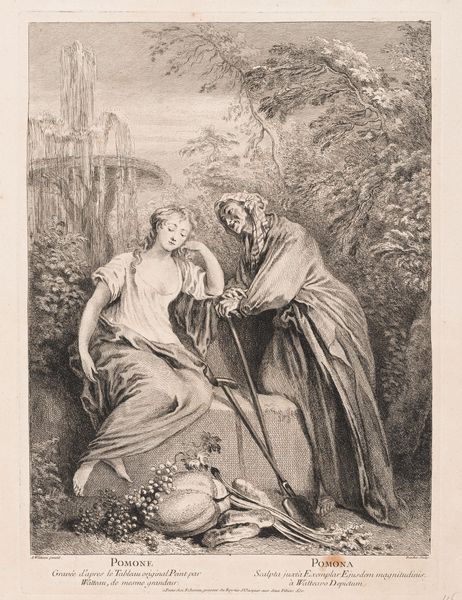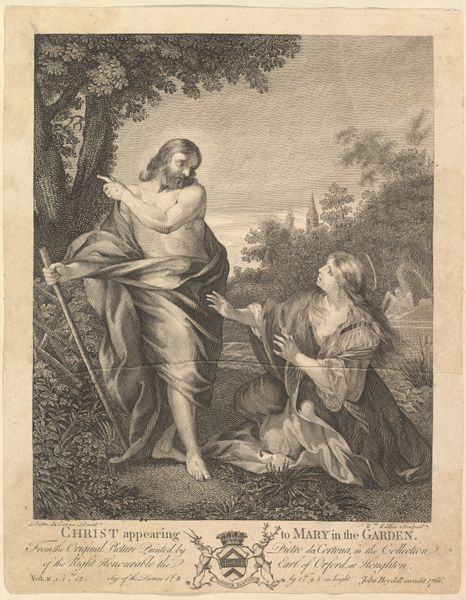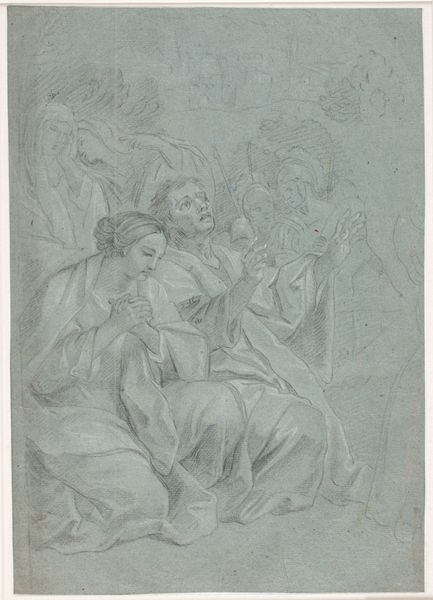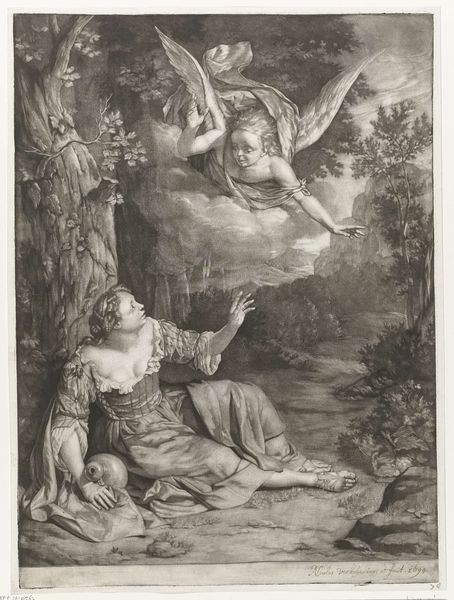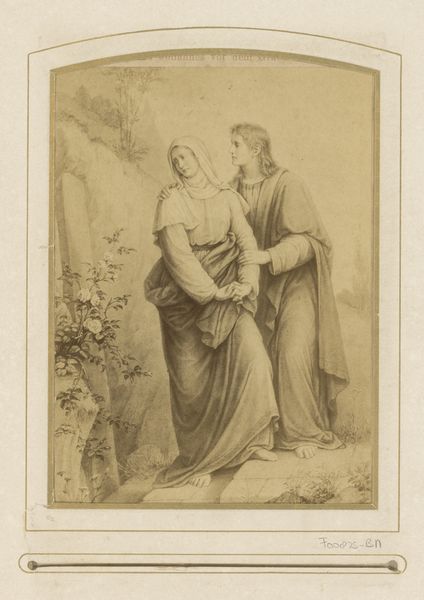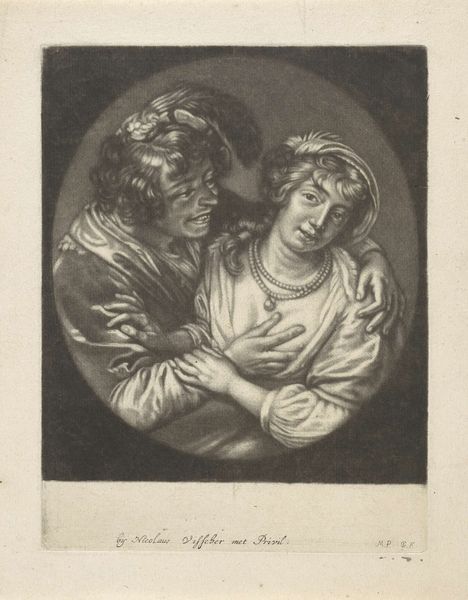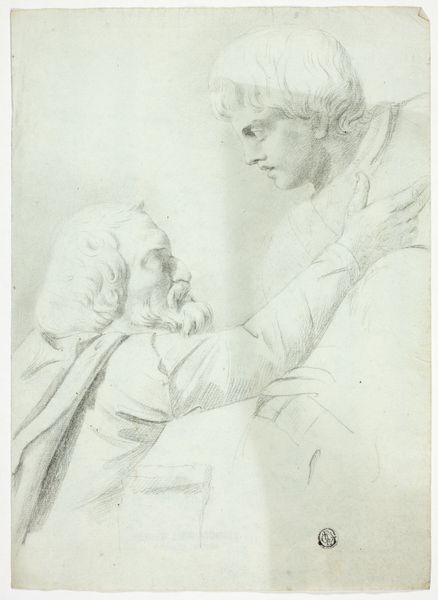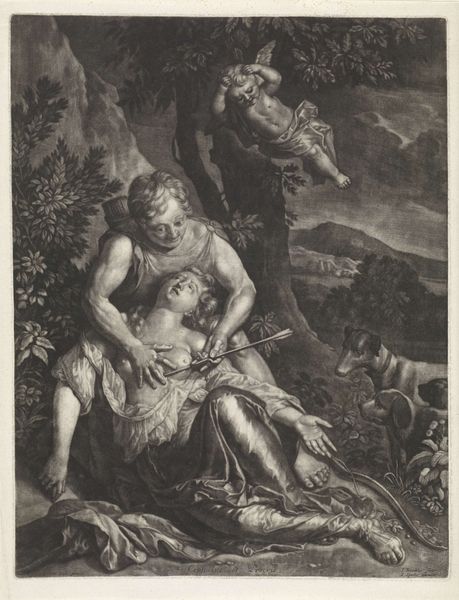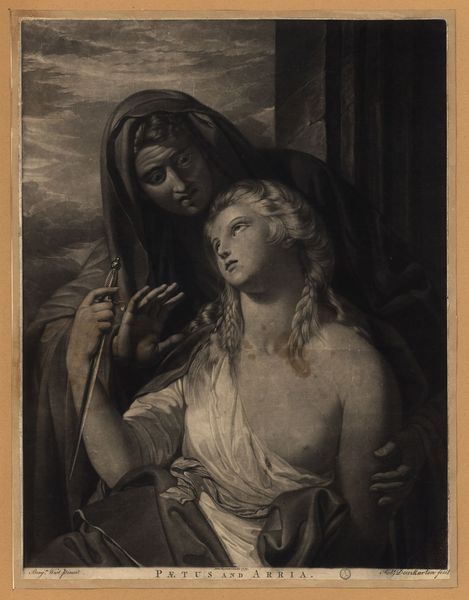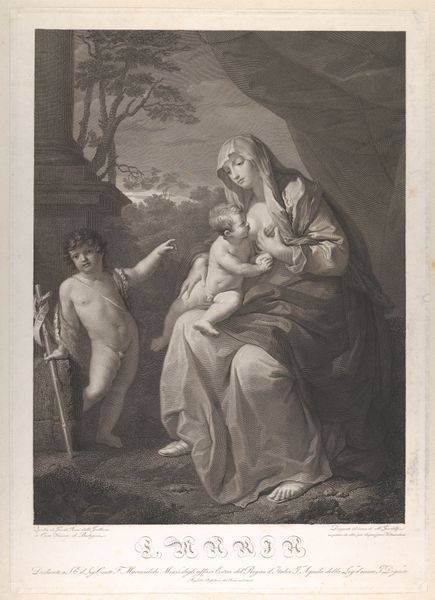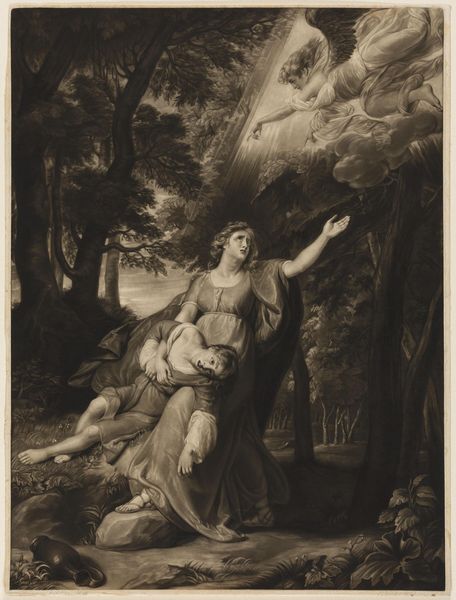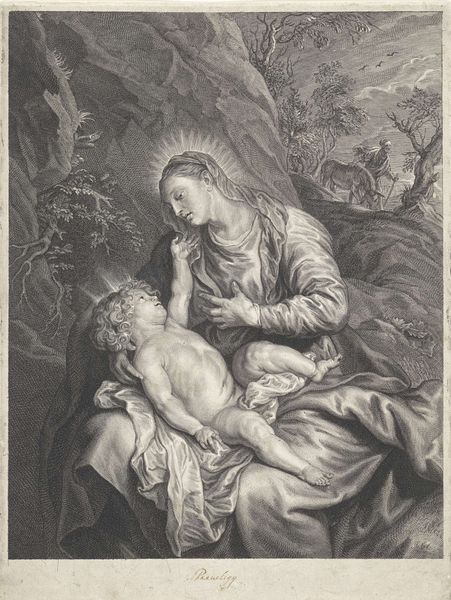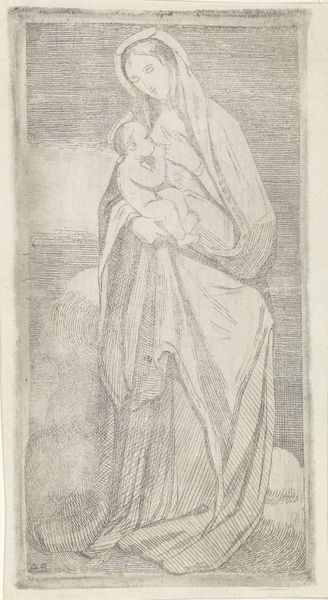
drawing, pencil, charcoal
#
portrait
#
pencil drawn
#
drawing
#
toned paper
#
facial expression drawing
#
light pencil work
#
pencil sketch
#
charcoal drawing
#
figuration
#
charcoal art
#
pencil drawing
#
pencil
#
portrait drawing
#
pencil work
#
genre-painting
#
charcoal
#
realism
Dimensions: height 152 mm, width 128 mm
Copyright: Rijks Museum: Open Domain
Matthijs Maris rendered this drawing of an old beggar with his daughter using graphite. Maris was Dutch, and spent much of his career in Paris and London. In the 19th century, rapid industrialization and urbanization led to increased poverty and social inequality. This drawing seems to comment on that historical context. The figures appear vulnerable, the old man weary and supported by his daughter. The landscape is nondescript, and the overall tone is somber. The image creates meaning through the visual codes of realism. It also alludes to religious associations of the time. Images of the Madonna and Child were extremely popular throughout Europe at this time, and the image of a dutiful daughter assisting her father surely carries some of that cultural weight. As historians, we can research the social and economic conditions of the 19th century, including records, newspaper accounts, and even other artistic and literary depictions of poverty. By understanding the social and institutional context in which art is made, we can better appreciate its meaning and significance.
Comments
No comments
Be the first to comment and join the conversation on the ultimate creative platform.
